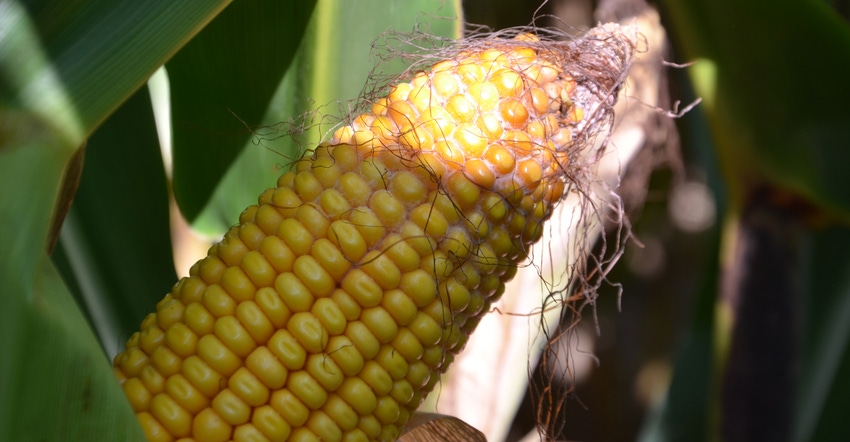
Significantly more reports of ear mold are circulating this year. Ear molds appear to be widespread across the eastern Corn Belt. If you have one or more infected fields, what should you do next? If you’re drying and storing corn, should you treat infected corn differently than corn without mold?
Greg Trame, director of technology sales for GSI, says the first decision is whether it’s feasible to store such corn on-farm. That will depend partly on your grain handling setup and equipment.
“If you don’t have access to a continuous-flow dryer where you can achieve a plenum temperature of 180 degrees F, you aren’t sure you can dry it to 15% or lower immediately, and/or you can’t keep it cool, you may want to consider selling it now,” Trame says. “Based on experience, we know corn coming out of the field with mold problems won’t store like normal corn. You’ve got to step up your grain management strategy.”
If you didn’t check many ears and find mold but test weight is lower than normal, it’s a sign corn quality may be compromised, Trame adds. If it’s because mold is present, mold will continue to grow in stored corn unless you reduce moisture and temperature enough to retard mold growth.
Storing corn with mold
Suppose that since you have the equipment, you’re going to store the corn. Trame says yes, you must handle and treat it differently than normal, mold-free corn. Here are four key steps:
1. Run mold-infected grain through a continuous-flow dryer. If the plenum temperature in the dryer is at least 180 degrees, you can kill most of the mold with heat.
“This won’t be a year when you can use some normally efficient drying systems that don’t reach a plenum temperature of 180 degrees if you have mold issues,” Trame says. “If you don’t get mold-infected corn hot enough, you’re reducing storage life of that grain.”
2. Get the corn dry enough. “This also won’t be a year when you can get corn to 16% or 17% and finish drying with aeration if you have mold issues,” Trame says. “You need to take it down to 15%. If you’re going to store for any length of time, you should go a point lower than normal. We would really like to see you take it down to 14%.”
3. Get the corn cold. Cool corn is far less likely to mold, Trame says. “You don’t need to freeze it, but you want to cool it down as much as possible as quickly as possible,” he says. It may take several nights in a row with low temperatures in the 30s and daily highs in the 50s to cool down grain sufficiently.
“Run fans whenever you get these temperatures until you get it cool,” Trame says. “If temperatures aren’t that low when you bin it, but you dry it with the plenum temperature reaching 180 degrees to 15% or lower, you should be OK until it gets cooler outside.”
4. Monitor grain carefully. Check grain every week instead of every other week, Trame suggests. “This would be a great time to take advantage of some new monitoring options for stored grain,” he says. “Monitor temperature and moisture levels closely.”
About the Author(s)
You May Also Like




